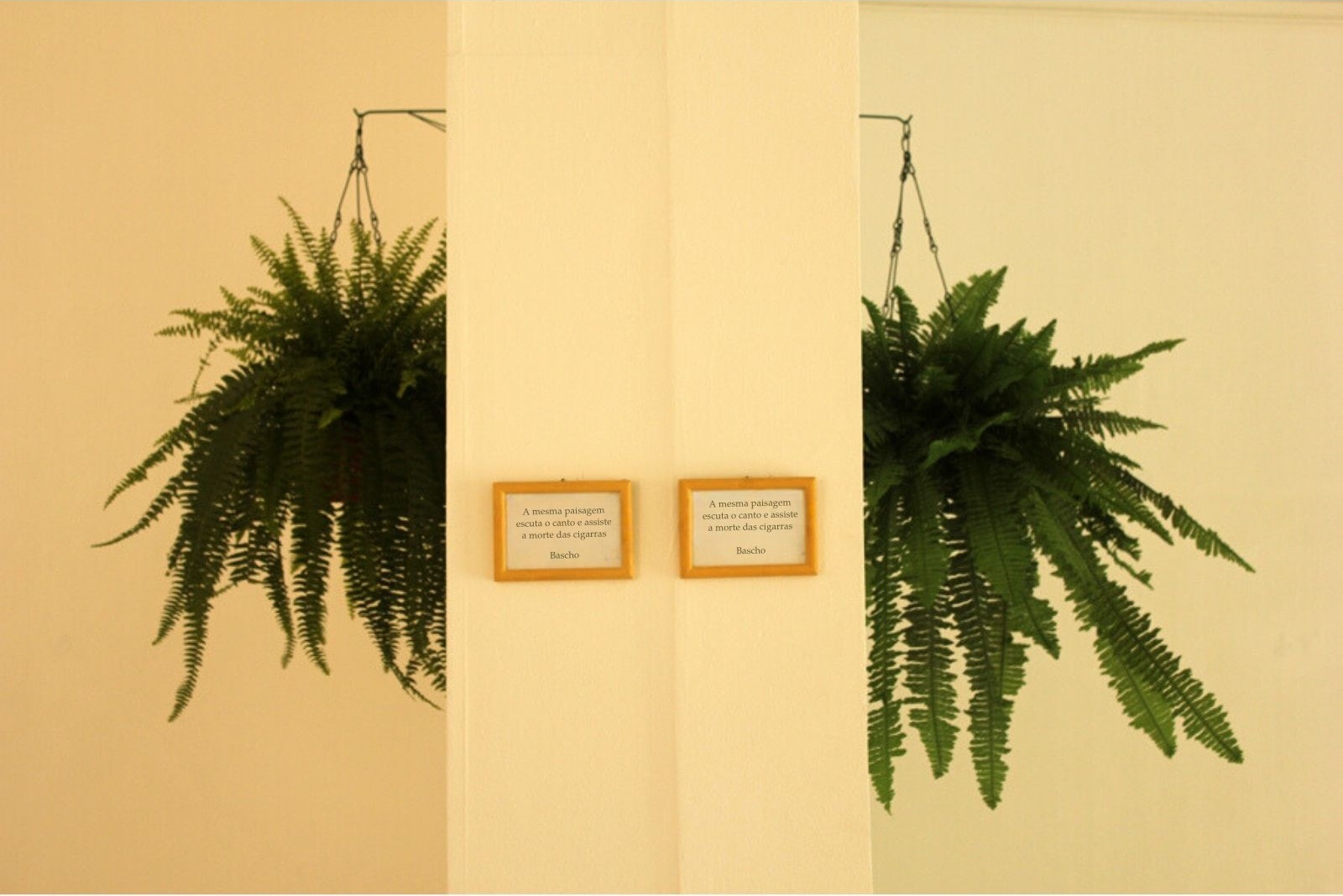Qual é o estilo das questões de interesse?
Duas conferências sobre filosofia empírica
DOI:
https://doi.org/10.26512/dasquestoes.v18i1.48904Palabras clave:
Alfred North Whitehead, empirismo, questões de interesse, bifurcação da natureza, estéticaResumen
Tornou-se de grande interesse investigar a história do que Whitehead chamou de "bifurcação da natureza". Esta história é possível desde que conectemos a história da arte com a história da ciência para investigar as razões pelas quais a distinção entre qualidades primárias e secundárias tem sido considerada tão central desde a época de Locke até os debates atuais em torno do "naturalismo". Essas conferências tentam esboçar essa história, definindo assim um segundo empirismo na linha do proposto por William James, que é definido mais por "questões de interesse" do que por "questões de fato", cuja estética muito peculiar está sendo explorada.
Descargas
Citas
ALPERS, Svetlana. The Art of Describing. Chicago: University of Chicago Press, 1983.
ASHMORE, Malcolm; EDWARDS, Derek; POTTER, Jonathan. The Bottom Line: the Rhetoric of Reality Demonstrations. Configurations. pp. 1-14, 1994.
CRARY, Jonathan. Techniques of the observer. On vision and modernity in the nineteenth century. Cambridge, Mass: MIT Press, 1990.
DEBAISE, Didier. Un empirisme spéculatif: Lecture de Procès et Réalité. Paris: Vrin. 2006.
DIJKSTERHUIS, E.J. The Mechanization of the World Picture Pythagoras to Newton. Princeton: Princeton University Press, 1961.
DESCOLA, Philippe. Par delà nature et culture. Paris: Gallimard, 2005.
FLECK, Ludwig. Genesis and Development of a Scientific Fact. Chicago: The University of Chicago Press, 1981.
HARTMANN, Frank Hartmann. “Humanization of Knowledge through the Eye” In: LATOUR, Bruno; WEIBEL, Peter (ed.) Making Things Public. Atmospheres of Democracy. Cambridge, Mass: MIT Press, 2005, pp. 698-707.
IVINS JR., Williams M. On the rationalization of sight: with an examination of three Renaissance texts on perspective. De artificiali perspectiva, [The artificial perspective]: reproducing both the first edition (Toul, 1505) and the second edition (Toul, 1509). New York: De Capo Press e Plenum Press. pp 8-9, 1973.
LATOUR, Bruno. Drawing Things Together. In: LYNCH, Mike; WOOLGAR, Steve (ed.) Representation in Scientific Practice. Cambridge, Mass: MIT Press, 1990.
_____. Gabriel Tarde and the End of the Social. In: JOYCE, Patrick (ed.) The Social in Question: New Bearings in History and the Social Sciences. Londres: Routledge, 2002.
_____. Politics of Nature: How to Bring the Sciences into Democracy. Cambridge, Mass: Harvard University Press, 2004.
_____. Why Has Critique Run Out of Steam? From Matters of Fact to Matters of Concern. Critical Inquiry, v. 30, n. 2, pp. 15-20, 2004.
_____. From Realpolitik to Dingpolitik. How to Make Things Public. An Introduction. In: LATOUR, Bruno; WEIBEL, Peter Weibel (ed.) Making Things Public: Atmospheres of Democracy. Cambridge, Mass: MIT Press, 2005.
_____. Reassembling the Social. An Introduction to Actor-Network Theory. Oxford: Oxford University Press, 2005.
_____. What is Given in Experience? A Review of Isabelle Stengers ‘Penser avec Whitehead. Boundary 2. pp. 222-237, 2005.
LATOUR, Bruno; WOOLGAR, Steve. Laboratory Life. The Construction of Scientific Facts. 2ª ed. Princeton: Princeton University Press, 1986.
LATOUR, Bruno; WEIBEL, Peter. (ed) Iconoclash. Beyond the Image Wars in Science, Religion and Art. Cambridge, Mass: MIT Press, 2002.
_____. Making Things Public. Atmospheres of Democracy. Cambridge, Mass: MIT Press, 2005.
LOCKE, John. Ensaio sobre o entendimento humano. (Coleção Os Pensadores) São Paulo: Abril Cultural, 1978.
_____. Ensaio sobre o entendimento humano. 5ª ed. Lisboa: Fundação Calouste Gulbenkian, 2014.
MILOSZ, Czeslaw. A Theological Treatise. Spiritus: A Journal of Christian Spirituality, v. 2, n. 2, Outono, The Johns Hopkins University Press, pp. 123- 204, 2002.
SLOTERDIJK, Peter. Foreword to the Theory of Spheres. In: OHANIAN, Melik; ROYOUX, Jean Christophe (ed.) Cosmograms. New York: Lukas and Sternberg, 2005.
STENGERS, Isabelle. L’effet Whitehead. Paris: Vrin, 1994
_____. The Invention of Modern Science. Minneapolis: University of Minnesota Press, 2000.
_____. Penser avec Whitehead: Une libre et sauvage création de concepts. Paris: Gallimard, 2000.
TARDE, Gabriel. Social Laws: An Outline of Sociology. Traduzido por Howard C. Warren. Kitchener: Batoche Books, 2000.
_____. Monadologia e Sociologia e outros ensaios. Tradução de Paulo Neves. São Paulo: Cosac Naify, 2007.
UEBEL, Thomas E.; CARTWRIGHT, Nancy; FLECK, L. Otto Neurath: Philosophy Between Science and Politics. Cambridge: Cambridge University Press, 1996.
WHITEHEAD, Alfred North. Concept of Nature. Cambridge: Cambridge University Press, 1920.
_____. Modes of Thought. New York: The Free Press, 1938.
_____. Science and the Modern World. New York: Free Press, 1967.
_____. O Conceito de Natureza. Tradução de Julio B. Fischer. São Paulo: Martins Fontes, 1994.
_____. A Ciência e o mundo moderno, São Paulo: Paulus, 2006.
Descargas
Publicado
Cómo citar
Número
Sección
Licencia
Derechos de autor 2023 Das Questões

Esta obra está bajo una licencia internacional Creative Commons Atribución-NoComercial 4.0.
Autores que publicam nesta revista concordam com os seguintes termos:
Autores mantém os direitos autorais e concedem à revista o direito de primeira publicação, sendo o trabalho simultaneamente licenciado sob a Creative Commons Attribution License o que permite o compartilhamento do trabalho com reconhecimento da autoria do trabalho e publicação inicial nesta revista.
Autores têm autorização para assumir contratos adicionais separadamente, para distribuição não-exclusiva da versão do trabalho publicada nesta revista (ex.: publicar em repositório institucional ou como capítulo de livro), com reconhecimento de autoria e publicação inicial nesta revista.
Autores têm permissão e são estimulados a publicar e distribuir seu trabalho online (ex.: em repositórios institucionais ou na sua página pessoal) a qualquer ponto antes ou durante o processo editorial, já que isso pode gerar alterações produtivas, bem como aumentar o impacto e a citação do trabalho publicado.



